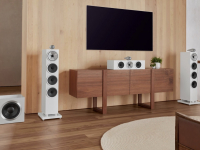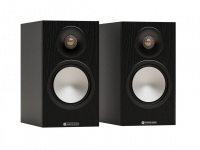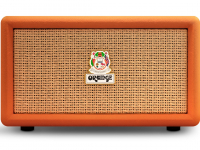
With their slim casing and minimal frames, it’s no wonder that modern televisions are left wanting in the sound quality stakes. Would we trade our stylish screens for the clunky boxes of old? No chance! For those who want to keep the box count down, soundbars and sound bases are one of the easiest ways to improve upon the sound of a TV’s built in speakers.
Today’s review subject comes from one of hi-fi’s oldest manufacturers, JBL, and manages to marry a tidy aesthetic with brilliant sound. Say hello to the JBL Boost!
Immediately noticeable in the flesh is the JBL’s diminutive stature. At just shy of 38cm in length, the Boost is around half the width of most soundbars on the market, so if space is truly at a premium, the Boost is already going to be on your shortlist to audition. But JBL know well enough that a soundbar can’t just be sold on its size alone. It has to be capable of kicking out some real noise, too!
To that end, JBL have plumped for two 50mm drivers that cover a wide frequency range, and a dual bass port design to make sure that bottom-end oomph is catered for, too. Having such a compact cabinet obviously restricts the amount of options that JBL could implement here, but in practise the Boost proved that these choices were definitely the right ones. More on that later!

Connectivity is reasonably varied, with a digital optical socket the main choice for connecting modern TV sets being the key inclusion. Dolby Digital is possible through this socket when used with compatible equipment, offering a virtual surround effect that really benefits movies. Bluetooth makes a fairly obvious appearance, giving an easy-peasy link up with smart phones and tablets for audio playback. A 3.5mm analogue in rounds things out, giving older equipment the chance to shine through the Boost, too.
One other nice feature to note is that the JBL’s supplied remote control can be bypassed in favour of the user’s own TV remote through the Boost’s learning feature. This is always a welcome option, reducing the remote count and keeping things simple. On to the listening!
Connected directly from our TV’s optical output, the Boost impressed from the off. Taking into account its tiny stature, the Boost was a revelation, bringing out crisp and clear dialogue from our off-air TV broadcasts, separating foreground and background nicely and making things much easier to follow. Depth was added to vocal ranges that the TV was simply unable to replicate, making for a much more pleasant listen over all.
With the Blu-Ray of 2012 Ang Lee spectacular, Life of Pi, the Boost stepped things up again. The flying fish scene’s dynamics were handled brilliantly for a budget product, with a real sense of space from the virtual surround. Again, the sound quality belied the relative size of the JBL, sounding much larger than the box would suggest.
Finally, music through Bluetooth also showed off the Boost’s credentials. Shadows, the 2011 EP from London-based producer Sam Shepherd AKA Floating Point, is a brilliant work showcasing his Jazz-influenced sampling, skittering drum patterns and all-round good vibes. The Boost gave a good showing of itself, separating the instruments out nicely, keeping things easy to follow. Bass performance was solid again, with the record’s stronger basslines shining nicely. All in all the JBL made the record its usual treat to listen to.
So if space is a major factor in deciding which soundbar is best for you, the JBL Boost is very much worthy of an audition. And even if it isn’t, this is a serious contender for getting more out of your TV and music listening either way. Well done, JBL!
If you are interested in this soundbar or any others then don’t hesitate to pop into your local Richer Sounds store for a demo, or give them a call for some free advice.
Shop with Richer Sounds today.
Author: Chris, Liverpool store





